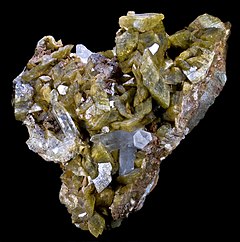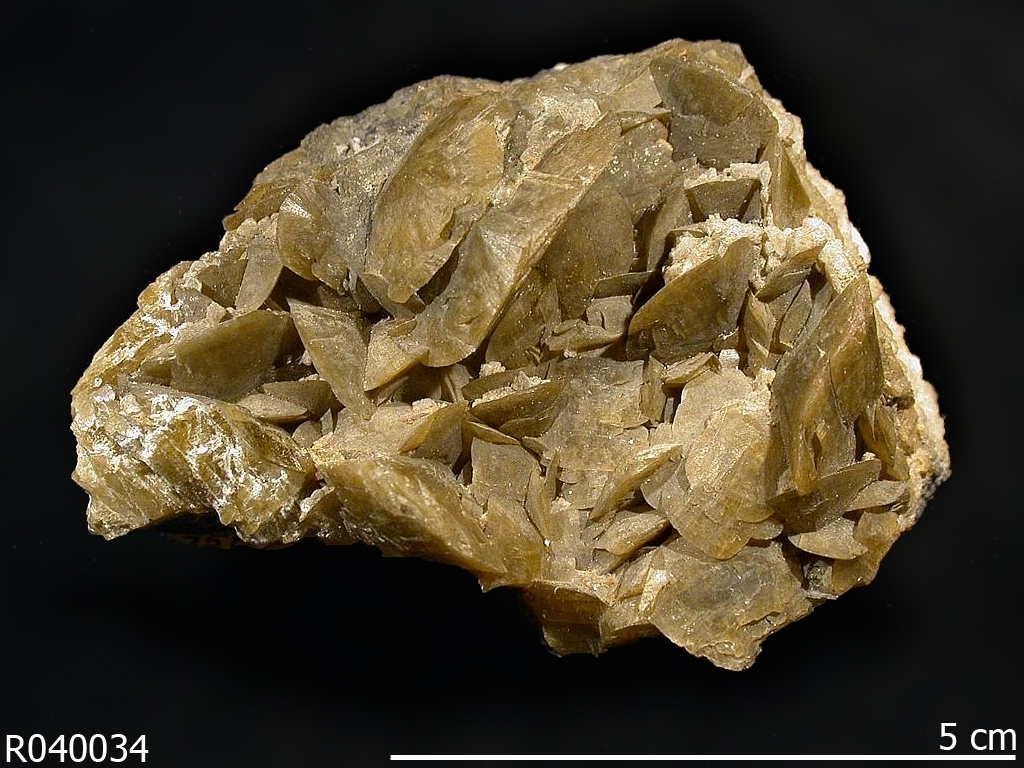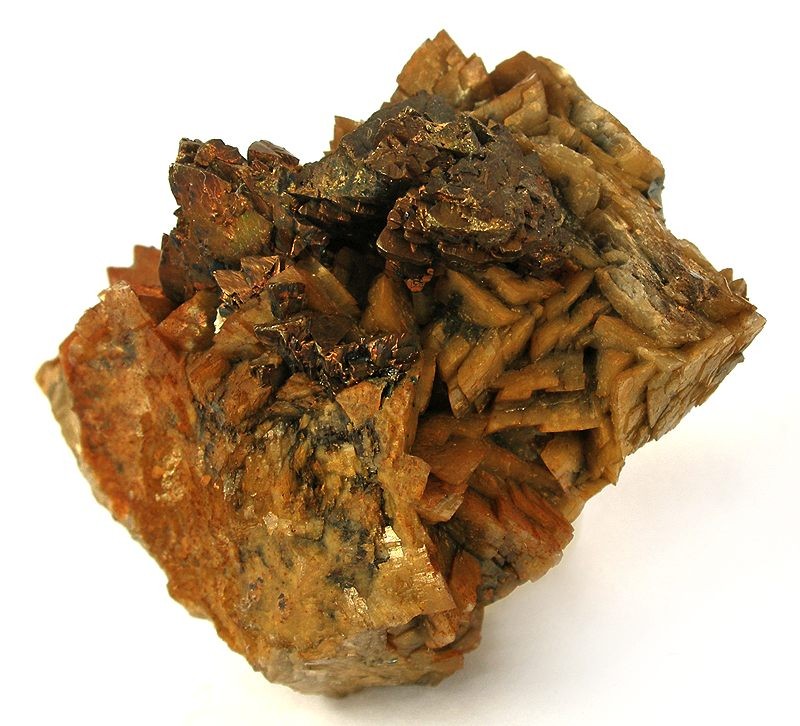Siderite
- Eisenkalk
- Siderite
- Bog iron
- Siderite
- Steel Stone
- White iron ore
Siderite, also under the mining designations Eisenkalk, siderite, siderite and Steel Stone or under its chemical name iron carbonate or iron (II ) known carbonate, is a commonly occurring mineral from the mineral class " carbonates and nitrates " (formerly known as carbonates, nitrates and borates ). It crystallizes in the trigonal crystal system with the chemical composition Fe [ CO3 ] and usually develops spätige or coarse or fine-grained masses of dense, globular and botryoidal aggregates, also called Sphärosiderit. Rarely rhombohedral crystals are found sometimes with curved surfaces.
Siderite has a pale yellow to brown color usually. Manga rich varieties tend to occur in black color. The crystals are transparent to translucent and shine glass to pearly. Noteworthy is the very good cleavage is after the rhombohedral faces.
Special Features
Siderite is soluble in hydrochloric acid only after heating, where he violently foams (formation of carbon dioxide CO2); it differs from the calcite, which is soluble in cold dilute hydrochloric acid.
Etymology and history
The name was inspired by François Sulpice Beudant mineral in 1832, the reference called it on his composition " siderosis ", according to σίδηρος ( sideros ) the Greek word for iron. Was first described scientifically in 1845 by Wilhelm Ritter von siderite Haidinger.
As one of the most important iron ore siderite is however known since prehistoric times. With its processing began in different cultures at different times the Iron Age.
Classification
In the now outdated but still in use 8th edition of the mineral classification by Strunz the siderite belonged to the mineral class of " carbonates, nitrates and borates " and then to the Department of " water clear carbonates without foreign anions ", where he, together with calcite, Gaspéit, magnesite, Otavit, Rhodochrosite, Smithsonite, Sphärocobaltit and vaterite the " Calcitgruppe " with the system no. V/B.02 formed.
The 9th edition used since 2001 and valid by the International Mineralogical Association (IMA ) of the Strunz'schen Mineral classification assigns the siderite in the class of " carbonates and nitrates " ( here, the borates form a separate class) and then in the Department of " carbonates without further anions, without H2O ". This division, however, is further subdivided according to the nature of the cations involved, so that the mineral is found according to its composition in the subsection " alkaline-earth (and other M2 ) carbonates ", where it together with calcite, Gaspéit, magnesite, Otavit, Rhodochrosite, Smithsonite and Sphärocobaltit the " Calcitgruppe " with the system no. 5.AB.05 forms.
The classification of minerals according to Dana assigns the siderite as the outdated 8th edition of the Strunz'schen systematics in the common class of " carbonates, nitrates and borates " and there in the department of " water clear carbonates ". Here he is with calcite, magnesite, rhodochrosite, Sphärocobaltit, Smithsonite, Otavit and Gaspéit in the " Calcitgruppe ( Trigonal: R- 3c)" with the system no. 14:01:01 within the sub-division of " water clear carbonates CO3 with a simple formula A " to find.
Modifications and varieties
Oligonit is a manganese-containing and magnesium-containing Pistomesit a variety of siderite.
Education and Locations
Siderite is found in a number of rock types - so it can be found for example in metasomatic converted sedimentary deposits, where he may well also be in mineable quantities. In addition, the mineral is also found in hydrothermal veins that were formed at moderate to low temperatures. In addition, siderite is also found in various metamorphic and igneous rocks.
As the largest Sideritvorkommen the earth shall be the Erzberg in Styria ( Austria ) with about 400 million tons of ore mineable. So far (until 2010) of them were cut about 250 million tons. The current annual production from the biggest Erztagebaubetrieb Western Europe is around 2 million tonnes of fines ( according to 6.5 million tons of rock ).
More significant, however, already largely degraded occurrence of siderite in Austria can be found in Radmer in Styria ( underground mining from 1939 to 1979 with last approximately 450,000 tonnes per year ) and at the Erzberg hut in Carinthia (mining of approximately 300 BC to 1978, last approximately 200,000 tonnes per year in mining, peaking in 1940 with 313,000 tonnes). In Germany there are considerable Sideritlagerstätten the winning country ( Westphalia), in the Westerwald, the Harz ( Neudorf ), in the Thuringian Forest ( Schmalkalden, Kamsdorf ) as well as in the Saxon Erzgebirge. At the Saar it was promoted in the form of Lebacher eggs.
Large Sideritlagerstätten one finds also in Australia, Bohemia (Czech Republic ), Bolivia, Minas Gerais (Brazil ), China, Portugal ( Panasqueiro ), Spain and England ( Tavistock in Devonshire and Camborne Redruth in Cornwall ). Famous are also the spectacular -looking spätigen masses, which were discovered in Mont Saint- Hilaire in Quebec City ( Canada).
Overall, siderite has so far (as of 2011) are detected at around 4700 localities, as well as in rock samples of the Mid-Atlantic Ridge and the China Sea ( Qiongdongnan basin).
Crystal structure
Siderite crystallized trigonal space group R3c ( Raumgruppen-Nr. 167) with the lattice parameters a = 4.69 Å and c = 15.38 Å and 6 formula units per unit cell.
Use
Siderite is a valuable iron ore with almost 50 % iron content and because of its easy smelting.
For use as a gemstone siderite is too soft and too sensitive. Clear and visually appealing varieties are occasionally offered for collectors in various smooth or faceted cuts.










